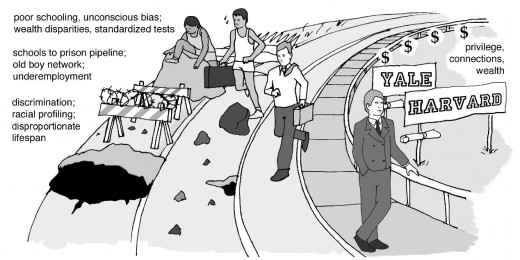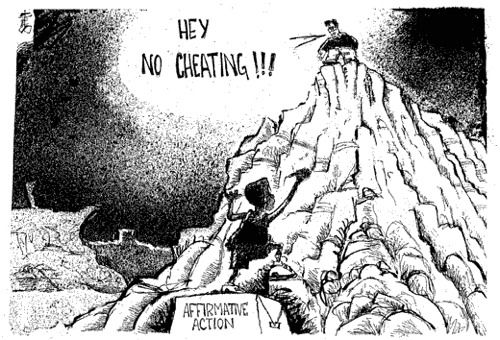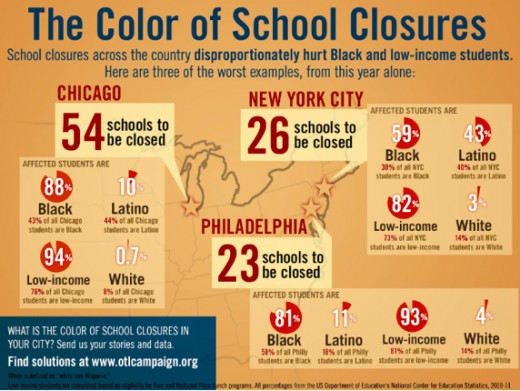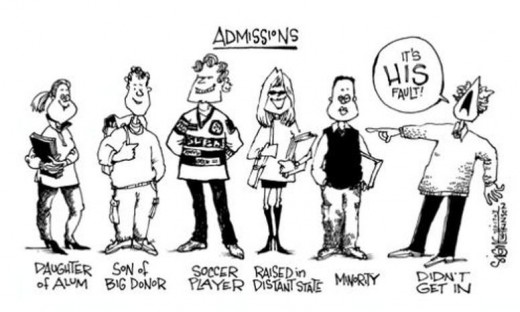Affirmative Action, Economics and Opportunity

Affirmative action, the act of giving some weight to race, gender and class when admitting students into colleges and universities, has been challenged by our current conservative courts and by whites who can’t get into the school of their choice, most often for academic reasons.
No school has had quotas for minority students since “University of California v. Bakke, in which a fragmented U.S. Supreme Court struck down the use of racial quotas” in 1978. Race is just one category among many that are used when admitting students into universities. A student’s academic performance and writing ability are far more important criteria. In fact, the Federal government prohibits admissions into universities of unqualified candidates based on race and gender preferences. As it was in the Texas case brought by a rejected white UT applicant, race is only one factor and entrance is a “Selection among equally qualified candidates” as required in the University of Texas system.
Due to historical and social factors that lead to economic exclusion and oppression of minorities, whites in our society fair much better than blacks and Latinos economically. That leads to poorer results in schools for most black and Latino students. Cuts in resources for schools increases the competition for limited spots in universities and poorer students do less well. Thus, some schools still look to “racial diversity via holistic admissions”, meaning, universities utilize race as just one consideration like other parts of a student’s background such as membership in clubs and volunteer activities.

Educational resources are restricted by the power elite in this nation through spending choices and limits. School spending cuts are a choice, despite what school reformers and anti-union politicians and activists tell us. Instead of spending money on schools, politicians all over this nation cut taxes for corporations and wealthy donors.
Spending on the military remains unabated in the U.S. while spending for schools shrinks. Congress recently increased our military budget by $18.6 billion more than the White House requested for weapons systems, some that don’t work, and continue tax shelters and cuts for the wealthy.
Public K-12 schools have been devastated in some cities in the search for profit, “…our schools are being starved into failure in order to justify mass privatization…First there was the bogus pretext of underutilization and mass school closures. Terms such as “right sizing” and “high quality seats” came from the Broad “School Closure Guide.”
That "guide" was used in Chicago to justify school closings.

Non-wealthy residents of this nation are put into competition for left-overs from a dwindling tax base. In this atmosphere of created scarcity for our schools through cuts in education funding, competition is higher than ever. That is part of the elite’s plan; keep the lower classes fighting over limited resources. That means schools in poor neighborhoods have to survive on less.
All of these cuts lead to larger class sizes and cuts to facilities and other school expenditures. Chicago has recently had another round of cuts to schools under Rahm Emanuel’s tenure as he continues to give subsidies to businesses. And due to more tax cuts, school funding could be reduced another 5% in Chicago by the end of 2014. (ibid)
Blacks and Latinos in poor neighborhoods are more likely to have their schools closed and have to go to a new school miles away. A Pew Report “…specifically analyzed the impact of school closures, finding that they did more harm than good, most notably in the nation's capitol. The report's authors fear that this latest round of DC closures will produce even worse outcomes by creating a transportation nightmare.” The report also states that in 2008, inner city children were most likely to live a short walk away from their schools, but not any more, at least in DC and other metro areas. Moreover, "The combination of distance and cost impedes attendance, particularly for secondary students, who have farther to travel, and teachers report that students sometimes fail to attend for lack of bus fare.” (ibid)

It is in this atmosphere of reduced school spending, these students have to compete with wealthier, usually white, children for higher education opportunities. And it is no surprise that “these closings are impacting vulnerable groups-- poor blacks and Latinos, special needs students and English language learners.”
Public university budgets have been under pressure since the late 1970s tax revolts, and current budgets to universities are still below pre-2008 recession levels. Meanwhile, Congress has no difficulty cutting Pell Grants to needy students. Apparently, students in this nation have to pull themselves up by their own bootstraps. Military contractors don’t have such worries.
Because of better resources and funding, majority white schools do better academically than black and Latino schools in poor neighborhoods. There are two ways to address this. First, you can integrate the schools so that schools have a mix of black, white, Latino and other minority students and every child has the same educational environment. Second, you can give the minority schools the same resources, same pool of teachers and equal facilities as the white, often wealthier, schools. Until this happens, we need affirmative action to help qualified minority students, those who didn’t have the same opportunity as students from wealthier families, matriculate.
White kids have a point when they say they should be admitted to universities of their choosing if they qualify. However, those who are to blame are not minority kids who also deserve a higher education, but state and national funders of higher education who cut and make it difficult for all high school graduates to enter universities. Moreover, our societal obsession with getting into the school of your choice and not accepting valid alternatives, the white privileged mindset of getting everything you want, leads to conflict and lawsuits. Instead of blaming affirmative action, let’s address the political economy of this nation that makes affirmative action necessary.









